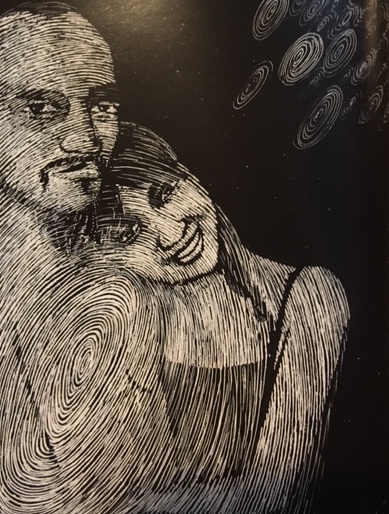His starting point was Nietzsche and this quote:
“What doesn’t kill you, makes you stronger.”
Robertson talked about an “arousal sweet spot” and trying to find that optimum activation point where we are challenged but not overwhelmed. He went into the science behind this state, clearly explaining that we are able to regulate the level of noradrenaline in our locus coeruleus by a simple act such as taking a few deep breaths. Or adopting a power pose and better posture to create a desired positive emotion (such as confidence) and improve blood flow to the front of the brain.
“Anxiety is excitement without breath” – Fritz Perls
We can also change the context of our brain’s arousal using words. He gave one delightful example of an experiment where two sides of a room were asked to calculate sums and perform songs in front of each other, preceding their test with one of two phrases – “I feel excited” and “I feel anxious”. The first group comfortably performed better. Robertson said the anxious group had a “threat mindset” while the excited grip adopted a “challenge mindset”.
The symptoms of both states are quite similar – increased heart rate, dry mouth, sweating, churning stomach. The key is being able to use this heightened sense of sharpness to your advantage and to reframe potential threats as challenges. In turn, you begin to notice signs of good things to come and can more easily recall good memories in the moment. For example, anticipating the thrill of nailing that presentation and holding a crowd rather than dreading the embarrassment of fluffing your lines in front of everybody. Robertson goes into more detail on this fight or flight phenomenon here. A little stress can be good, therefore, but not the chronic kind as this stimulates the production of cortisol, which is quite corrosive in the body, moving a person into a state of fear and avoidance.
“I can’t go on. I’ll go on” – Samuel Beckett
Another factor that profoundly affects the biology in our bodies is adversity. According to Robertson, 30% of genetics is inherited. The remaining 70% is “to play for”. He described the brain as a “highly sophisticated piece of hardware, with 100 billion neurons and millions of connections [synapses].” Software can have a profound effect on the performance of that hardware, so experiencing or undertaking moderately stressful challenges is a way of writing/re-writing that software.
Consequently, a person assumes greater control over their life and becomes more resilient in moments of adversity, thus being able to thrive in moments of stress. Compare a person that’s been cushioned and coddled as a child with someone that’s come from the school of moderately hard knocks and the former is far more likely to buckle than the latter. Apparently, it’s not good to tell kids how intelligent they are. Thanks mum.
One of the ideas that really tickled the audience was “being your own drug dealer”. Robertson was referring to the fact that successful people regularly reappraise themselves and set moderate goals. These stimulate the left-brain approach system, which encourages us to seek rewards while triggering the release of anxiety-tackling, mood-boosting dopamine. Being skilled in goal setting can help you get the best out of a given situation, as long as it’s balanced with right-brain avoidance activity and noradrenaline release. How you find that balance and draw the line between moderate and extreme stress can only come with trial and error.
Baffled by all this science? Ok, here are the key takeaways:
- Breath deeply, regularly
- Stand tall
- Say “I am excited”
- Set goals and reappraise them
- Read The Stress Test
- Play this ("We gon make it.")












